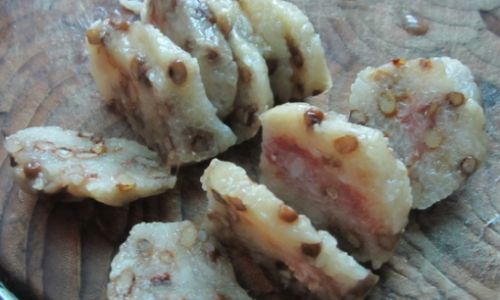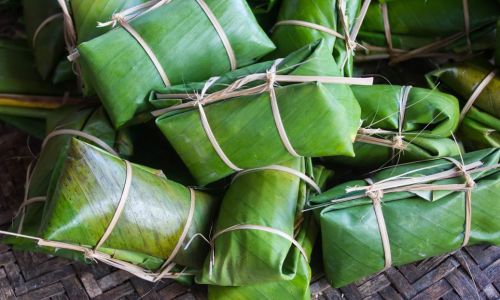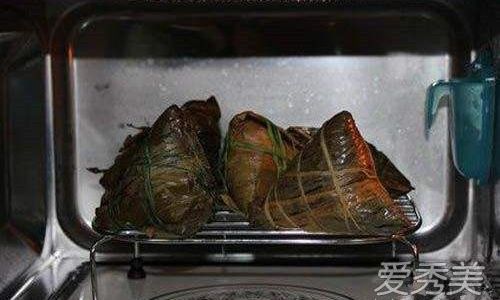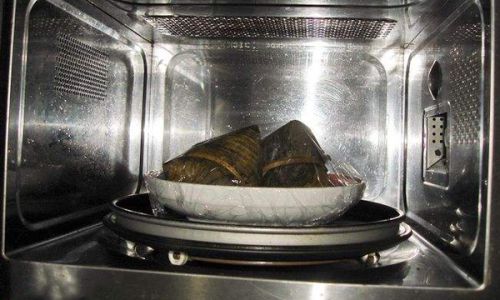Table of content
Introduction
Zongzi, a traditional Chinese rice dumpling wrapped in bamboo or reed leaves, is a beloved culinary treasure enjoyed during festivals like the Dragon Boat Festival and beyond. These pyramid-shaped delights are typically filled with ingredients like glutinous rice, pork, mung beans, or red bean paste, offering a harmonious blend of textures and flavors. However, in modern times, convenience often trumps tradition, leading many to wonder: Can frozen zongzi be safely and effectively reheated in a microwave? This article delves into the science, safety, and techniques behind microwaving frozen zongzi, ensuring you achieve optimal results without compromising taste or texture.

Understanding Zongzi: Tradition Meets Modernity
Zongzi’s origins date back over 2,000 years, tied to the legend of Qu Yuan, a patriotic poet. Today, it remains a symbol of cultural heritage, yet its preparation can be time-consuming. Freezing zongzi has become a popular solution for preserving freshness and extending shelf life. However, reheating methods vary, and microwaves—while convenient—require careful execution to avoid pitfalls like uneven heating, sogginess, or dried-out rice.
The Science of Microwaving Frozen Foods
Microwaves work by emitting electromagnetic waves that excite water molecules in food, generating heat. Frozen foods, with their icy crystals, pose unique challenges. The rapid thawing process can create hotspots while leaving colder pockets, leading to inconsistent results. Zongzi’s dense structure—compacted rice and fillings wrapped in leaves—further complicates heat distribution. Understanding these principles is crucial for safe reheating.
Traditional vs. Modern Reheating Methods
Steaming
Steaming is the gold standard for reheating zongzi. It preserves moisture, prevents sogginess, and maintains the leaves’ aromatic essence. However, it requires 20–30 minutes and specialized equipment, making it less ideal for busy lifestyles.

Boiling
Boiling is quicker (15–20 minutes) but risks over-saturation, leaving the rice mushy and the wrapper tattered.
Microwaving
The microwave offers unparalleled speed (5–8 minutes) but demands precision to avoid common issues. Let’s explore how to master this method.
Microwaving Frozen Zongzi: Step-by-Step Guide
Step 1: Preparation
- Remove Packaging: Discard any plastic or foil wrapping. These materials can melt or spark in the microwave.
- Thawing (Optional): For faster reheating, thaw zongzi in the refrigerator overnight. However, microwaving directly from frozen is safe if done correctly.
Step 2: Container Selection
Use a microwave-safe dish with a lid or vented plastic wrap. This traps steam, ensuring even heating and preventing dryness. Avoid metal ties or decorative strings; replace them with food-safe twine if necessary.

Step 3: Power Settings
- Low-to-Medium Power (50–70%): Reduces the risk of overcooking the exterior while the interior remains frozen.
- High Power: Risks uneven heating but shortens cooking time. Use sparingly.
Step 4: Timing and Intervals
- Frozen Zongzi (6–8 oz): 3–4 minutes on low power, followed by 1-minute intervals until heated through.
- Thawed Zongzi: 2–3 minutes on medium power.
- Check Doneness: Insert a toothpick into the center; it should feel warm, not cold.
Step 5: Resting Period
Allow the zongzi to rest for 1–2 minutes post-microwaving. This redistributes heat, eliminating cold spots and ensuring uniform tenderness.
Safety Precautions and Troubleshooting
Avoiding Sogginess
- Drain Excess Liquid: After microwaving, gently pat the zongzi with a paper towel to absorb surface moisture.
- Use a Rack: Elevate the zongzi on a microwave-safe rack to promote air circulation.
Preventing Dryness
- Add Moisture: Place a small cup of water in the microwave alongside the zongzi to create steam.
- Wrap in Damp Paper Towels: Encase the zongzi in a damp (not soaked) paper towel before microwaving.
Combating Uneven Heating
- Rotate Mid-Cycle: Pause the microwave halfway to flip or reposition the zongzi.
- Pierce the Wrapper: Make small slits in the leaves to allow steam to escape, preventing bursts.
Fire Hazards
- Remove Metal: Ensure no metallic components (e.g., staples, foil) are present.
- Monitor Closely: Never leave the microwave unattended, especially with frozen foods.
Comparing Microwave Results to Traditional Methods
| Criteria | Microwave | Steaming | Boiling |
|---|---|---|---|
| Time | 5–8 mins | 20–30 mins | 15–20 mins |
| Texture | Slightly softer | Ideal firmness | Prone to mushiness |
| Aroma Retention | Moderate | Excellent | Good |
| Convenience | Highest | Low | Medium |
Expert Tips for Perfect Results
- Adjust for Wattage: Lower-wattage microwaves (700W) may require 1–2 extra minutes.
- Experiment: Note the ideal time for your microwave’s power level and zongzi size.
- Enhance Flavor: Brush reheated zongzi with a mixture of soy sauce and sesame oil for added depth.
Common Mistakes to Avoid
- Overcrowding the Microwave: Heat one zongzi at a time for even results.
- Using High Power Initially: Start low to prevent exterior drying.
- Ignoring Resting Time: Skipping this step leads to uneven warmth.
Storage Tips for Frozen Zongzi
- Freeze Immediately: Consume or freeze zongzi within 2 days of purchase.
- Airtight Packaging: Use freezer bags or containers to prevent freezer burn.
- Label with Date: Zongzi keeps for up to 3 months when properly stored.
Cultural Considerations
While microwaving zongzi is practical, purists argue that traditional methods better honor the dish’s heritage. However, in a fast-paced world, balancing convenience and respect for tradition is key. Consider microwaving for quick meals and steaming for ceremonial occasions.
Alternative Reheating Methods
Oven Baking
- Preheat to 350°F (175°C).
- Wrap zongzi in foil and bake for 15–20 minutes.
- Results in crispier leaves but longer cooking time.
Air Fryer
- Heat at 360°F (180°C) for 8–10 minutes.
- Crisps the exterior while keeping the interior moist.
Conclusion
Microwaving frozen zongzi is not only possible but also a time-efficient alternative to traditional methods when executed correctly. By understanding the science of microwave heating, adhering to safety guidelines, and employing strategic techniques—such as using low power, intermittent stirring, and proper resting—you can enjoy warm, aromatic zongzi without sacrificing texture or flavor. Whether you’re a busy professional, a curious foodie, or a cultural enthusiast, mastering this skill bridges the gap between tradition and modernity, ensuring every bite of zongzi is as delightful as intended. So, the next time you crave this ancient delicacy, fear not the microwave—armed with knowledge, you’re ready to savor perfection.






0 comments